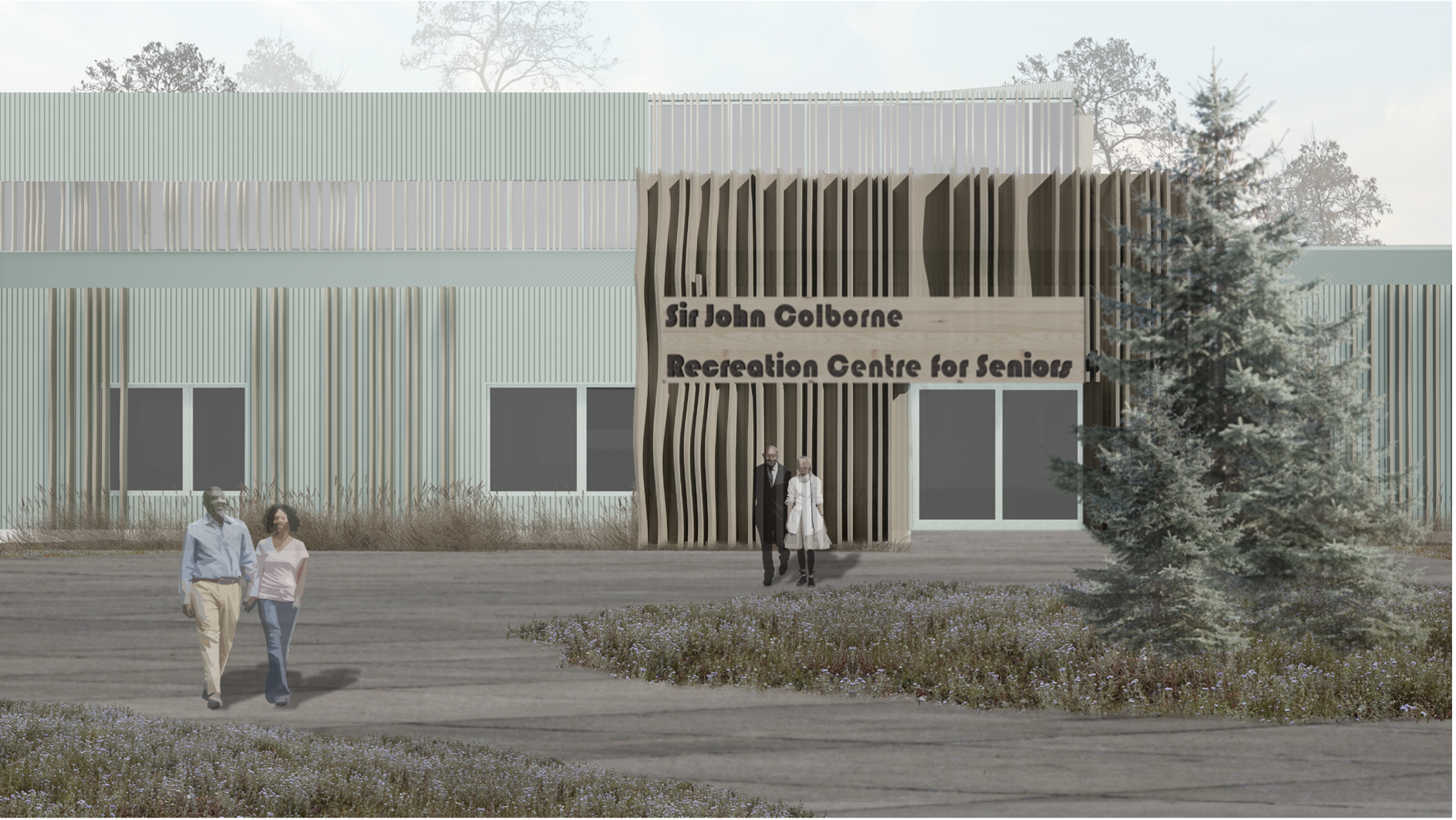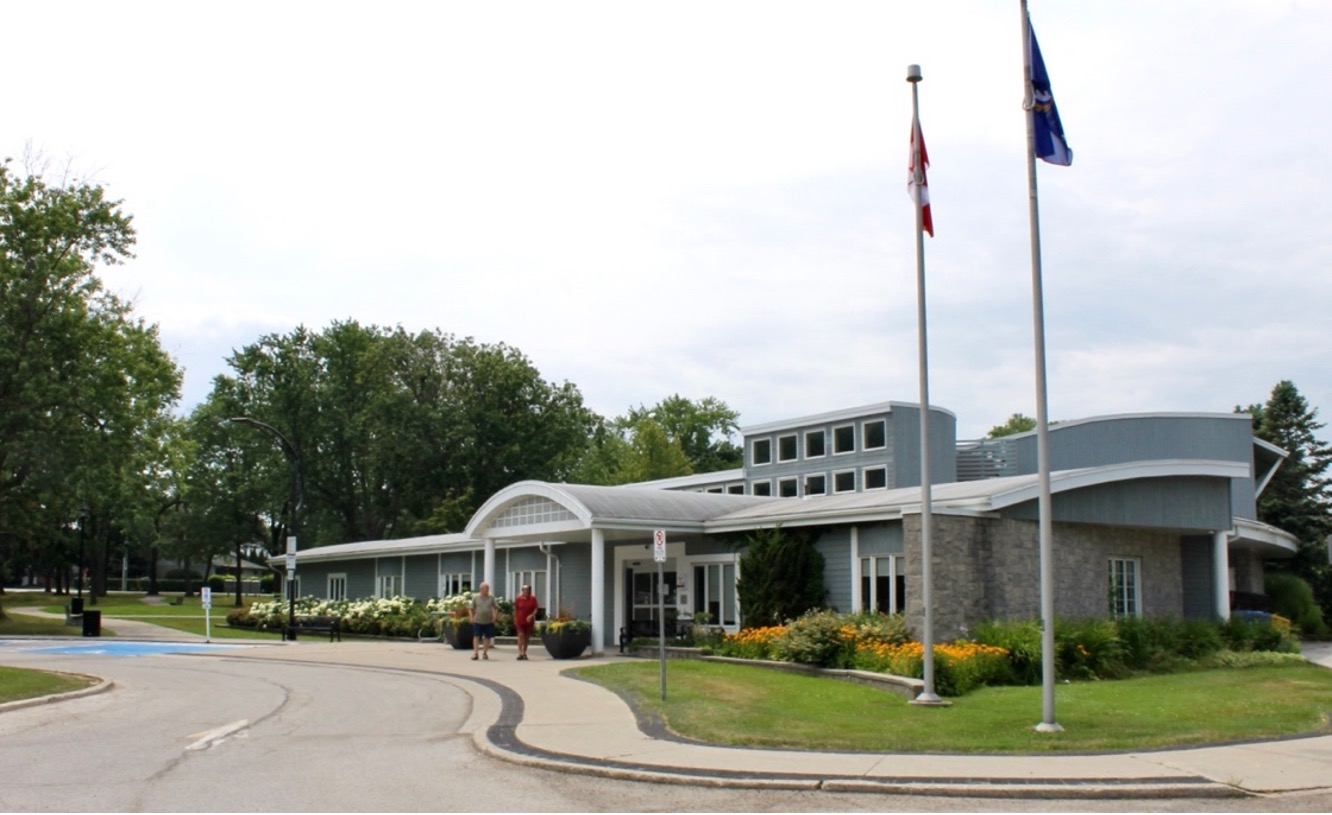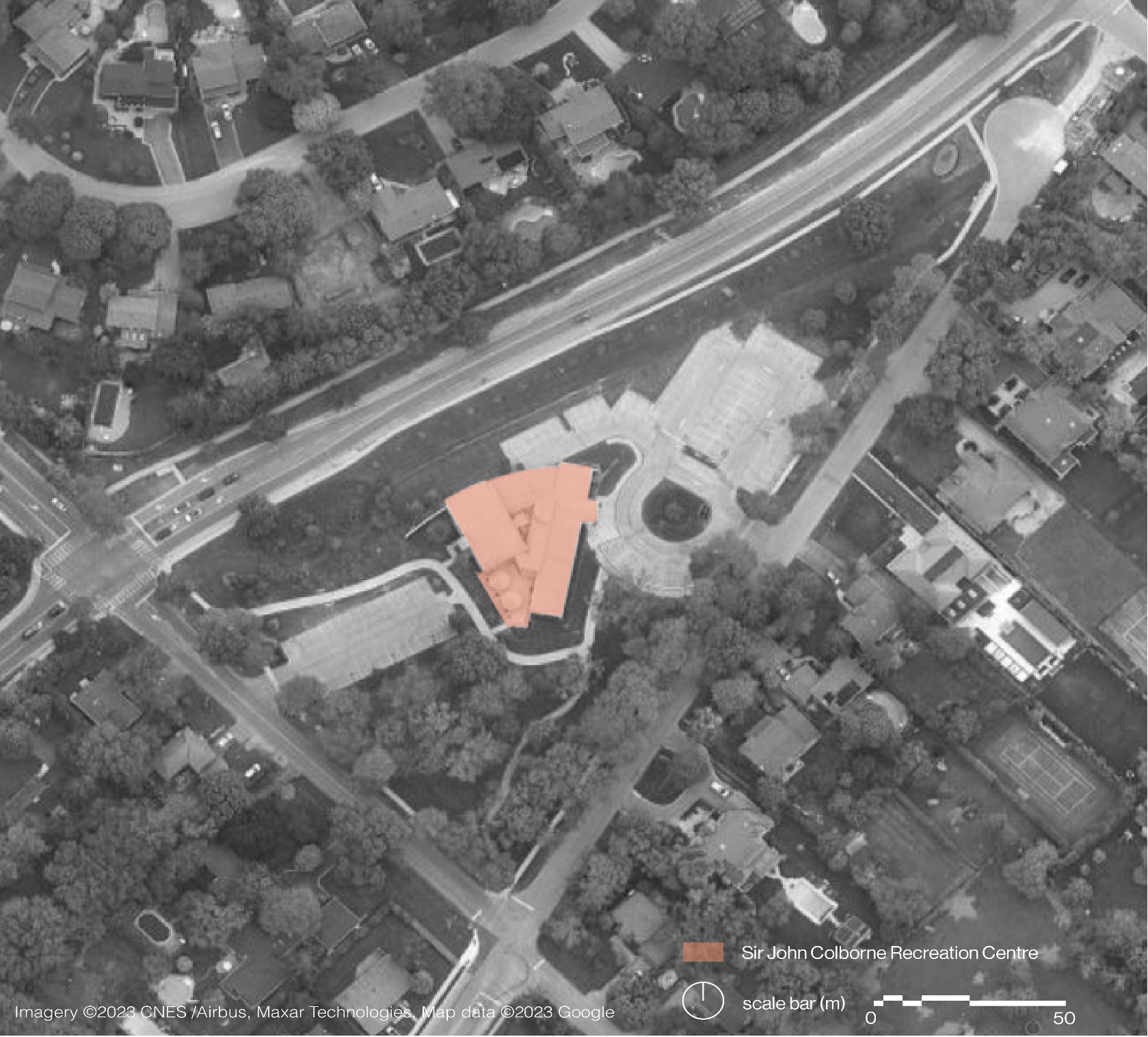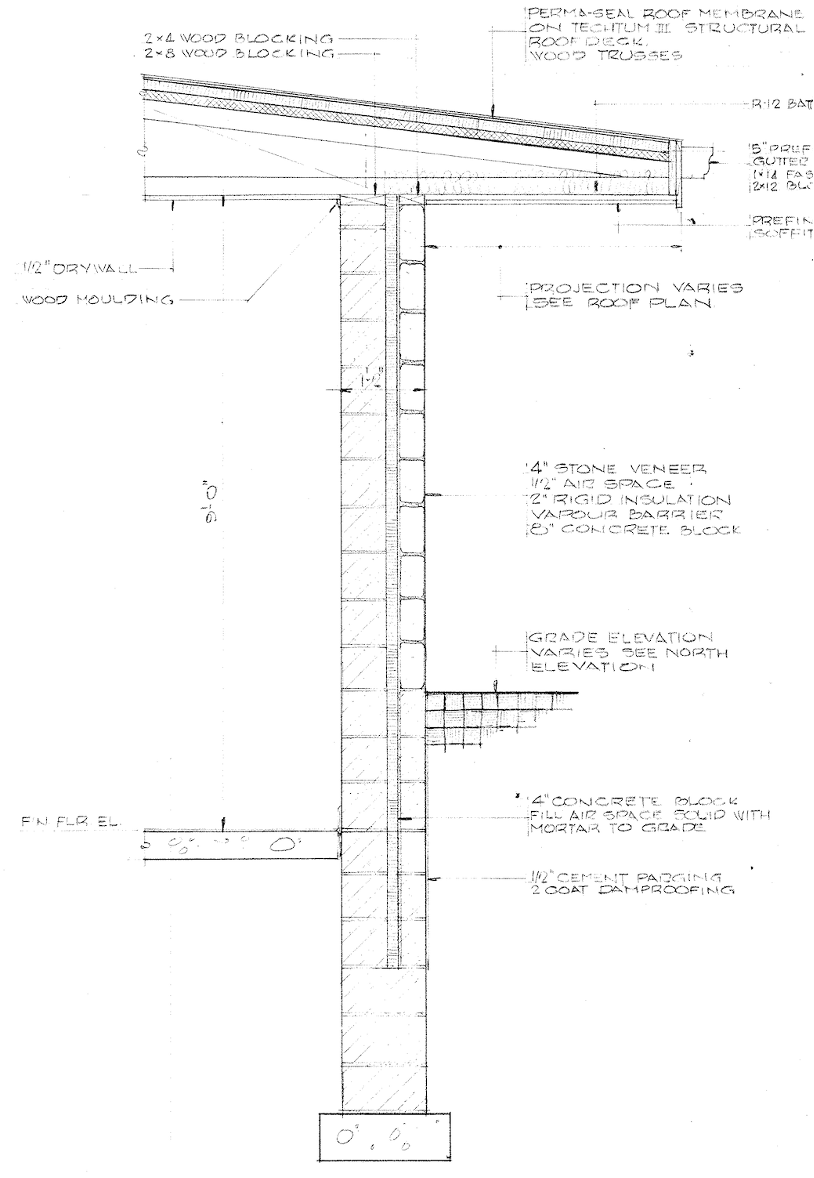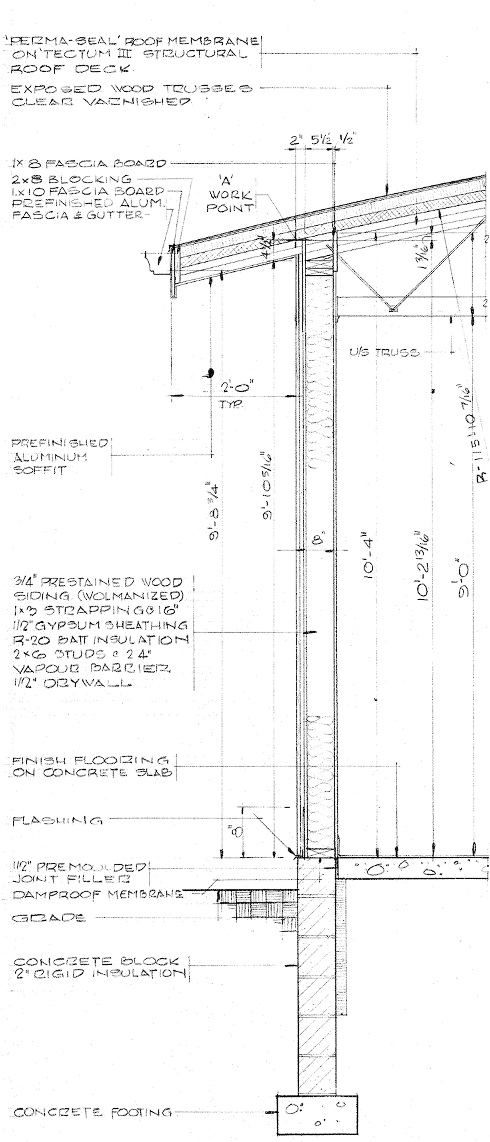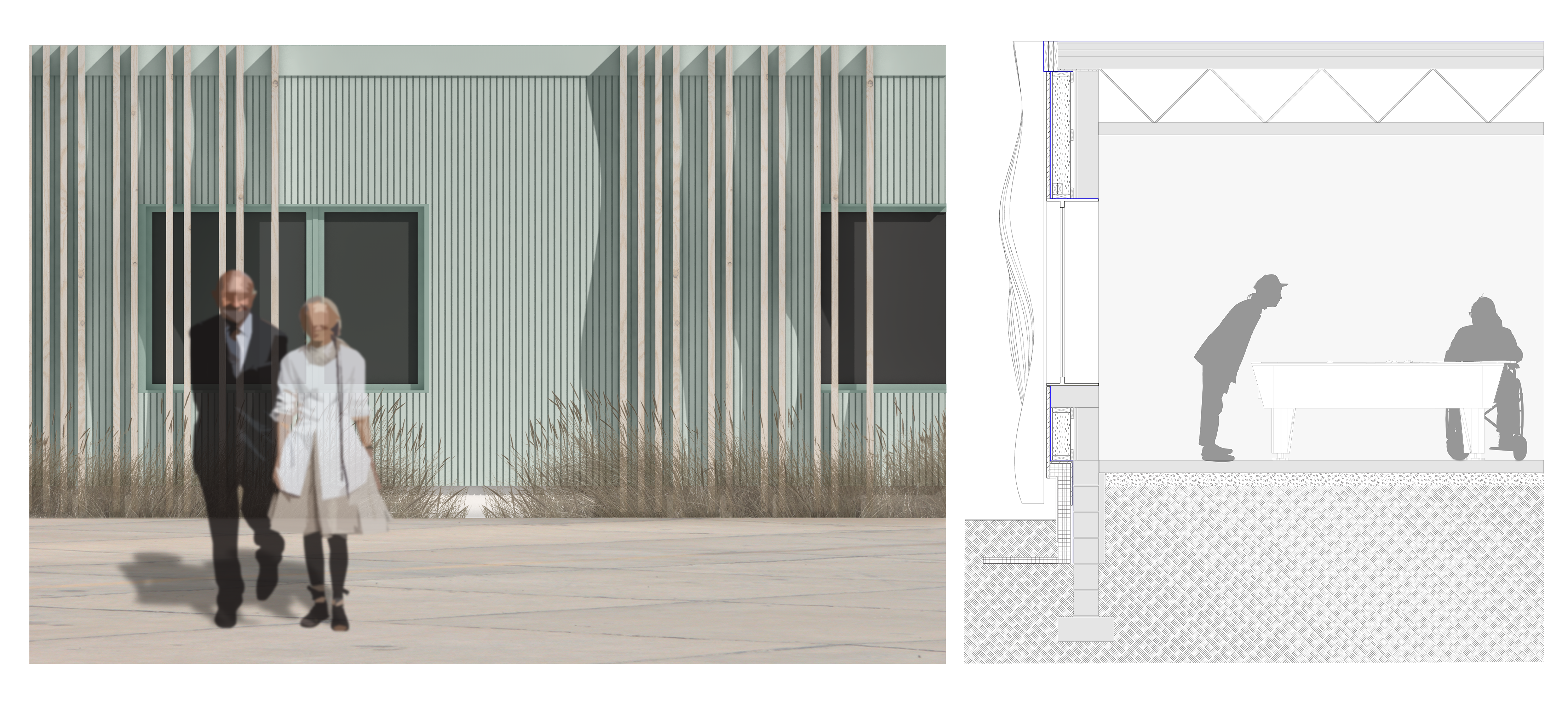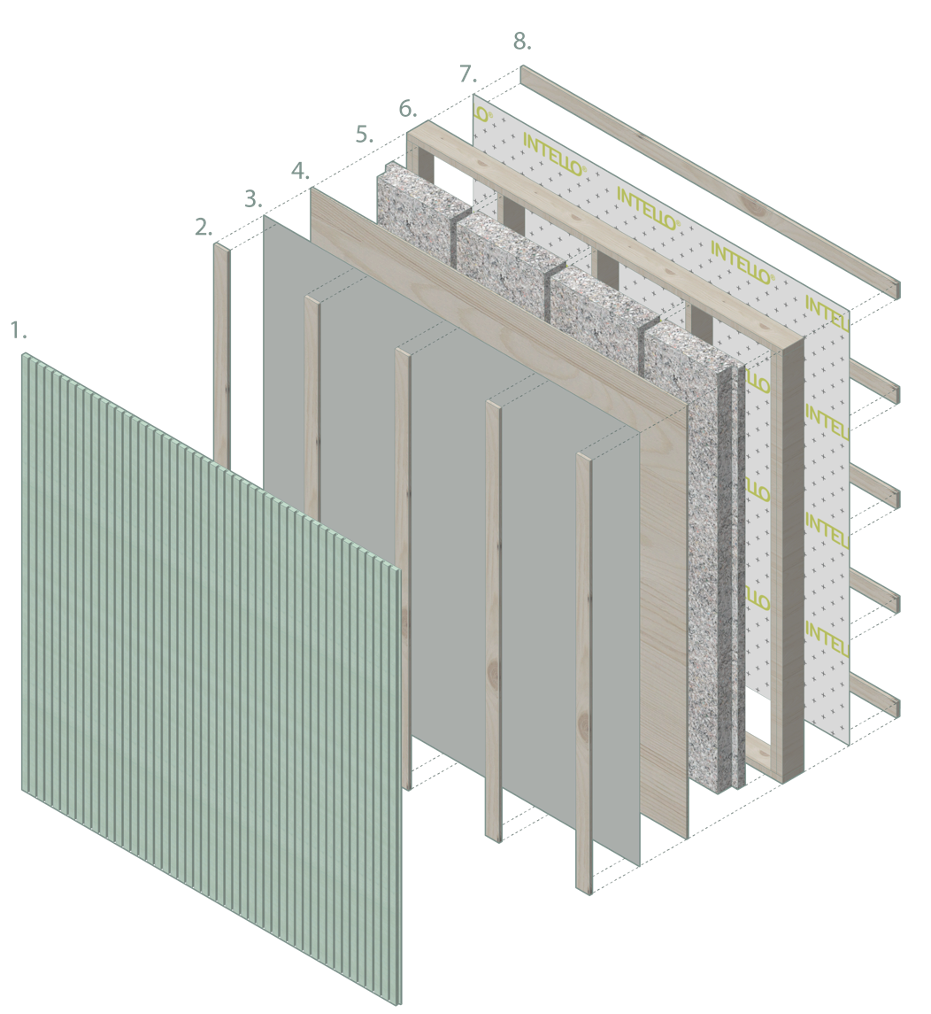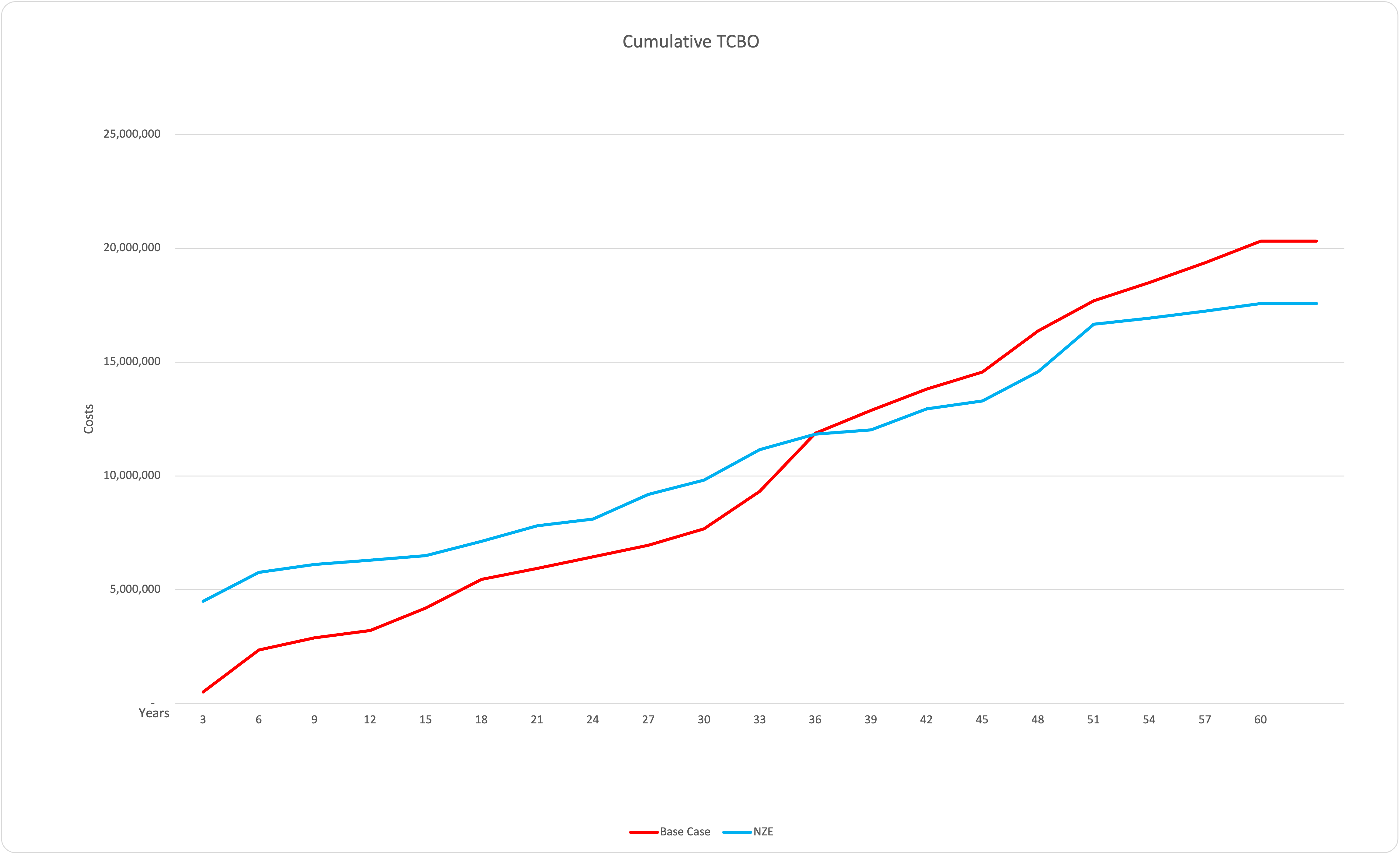Sir John Colborne Recreation Centre for Seniors Retrofit
This case study, submitted by the ReCover Initiative, outlines a net-zero scenario for the Sir John Colborne Recreation Centre for Seniors using a panelized deep retrofit solution.
| Building Type | Part 3 | Location | Oakville, ON |
| Year Built | 1989 | Structure Type | Concrete Masonry and Wood Frame |
| Total Floor Area | 852m2 | Climate Zone | 5 |
| Heating Degree Days | 3760 | Retrofit Type | Envelope and Mechanical |
Project Team
- Habit Studio Energy Modelling ( Designer or Architect )
- RDH ( Energy Modelling )
- M&R Engineering ( Electrical and Mechanical Engineer )
- Stanley Francispillai ( Hygrothermal )
- Seefar Building Analytics ( Financial Model )
- QSolv ( Cost Consultant )
- Fatma Osman ( Fatma Osman )
- Natural Resources Canada, The Atmospheric Fund, Nova Scotia Department of Natural Resources and Renewables, City of Burlington, Municipality of Colchester, Halifax Regional Municipality, Town of New Glasgow, City of Oakville, City of Saskatoon ( Funders )
Project Priorities
- Reduce Energy Consumption
- Achieve Net Zero or Net Zero Ready
- Reduce GHG Emissions
- Other
Project Goals
The objectives of this study were to de-risk investment in deep retrofits in Canada, to provide evidence on the effectiveness and scalability of a panelized deep retrofit approach and to build confidence and experience in deep retrofits among Canadian municipalities and industry stakeholders.
The goals for the Deep Retrofits explored included:
- Develop a scenario that achieves an Energy Use Intensity (EUI) reduction of 50%.
- Develop a Net Zero Energy Ready (NZER) scenario.
- Develop a Net Zero Energy (NZE) scenario with the addition of onsite renewables.
- All solutions minimize occupant disruption during construction.
- All solutions target minimal embodied carbon.
- Identify the retrofit pathway to the lowest Total Cost of Building Ownership.
- Demonstrate a calculated payback of 20 years or better.
Project Description
Planning the Retrofit
Existing Building Details
Overview
The Sir John Colborne Centre is a one-storey building with a gross floor area of 852m2 (9,171sq. ft) constructed in 1989.
The facility is well used, offering daily social, recreational, and health and wellness programming for seniors. throughout the day with little down time. The building includes an auditorium which is used recreation activities including fitness classes, drop-in social activities, music, games and for private event rentals. Smaller programming rooms offer arts and crafts, woodworking, and billiards. The central corridor of the building functions as a lounge and the kitchen operates as a café during all working hours. The building also contains administration offices for staff of the facility.
The daily hours of operation are 8:30am – 4:30pm on weekdays with extended hours until 9pm on Tuesdays. The building is also open for rentals on evenings and weekends. Prior to the pandemic the daily number of occupants ranged from 300-500 people.
Existing Envelope
The building has two wall types and two roof types. The walls of the auditorium are concrete masonry unit (CMU) with 50mm (2”) rigid insulation with stone veneer or wood cladding. The rest of the walls in the building are 2×6 wood stud framing with fiberglass batt insulation.
The roof is framed with engineered trusses. Approximately 80% of the roof is insulated with 3” panels of Tectum III acoustical roof deck. The rest of the roof is insulated with 2” rigid foam insulation.
The concrete slab-on-grade floors are not insulated although some parts of the building have perimeter insulation on the foundation wall.
Existing Structure
The foundation consists of 305mm (12”) CMU walls with cast-in-place strip footings. There is no evidence to suggest deficiencies in the foundation.
The above-grade walls are a combination of 203mm (8”) and 305mm (12”) CMU walls and wood stud walls framed at 610mm (24”) o.c. These are the main load-bearing elements and the primary lateral load resisting system. There is no evidence to suggest structural deficiencies in the wall system.
The roof structure consists of various pre-engineered open web joists with steel webs.
Structural analysis determined the walls of the building can support added loading from a panelized retrofit, however the roof cannot support the added loading of prefabricated panels.
Existing Electrical and Mechanical
| Primary Heat Source | Gas fired RTU and Electric Baseboard |
| Heat Distribution | VAV Distribution |
| Cooling Source | 34 Ton RTU |
| Electrical Service | 400A Connection to Grid |
| Interior Lighting | Fluorescent Fixtures |
Existing Energy Use (KWH/M2/YR)
| Category | Details |
|---|---|
| Lights | 36.06 |
| Plug Loads | 21.71 |
| Electric Heat | 32.96 |
| Cooling | 14.32 |
| Pump | 0.57 |
| Fans | 26.12 |
| Elec DHW | 23.43 |
| Natural Gas Heating | 241.93 |
Upgrade Scenario
The design team worked collaboratively to develop retrofit scenarios targeting the project objectives. The analysis assumes a ‘like for like’ retrofit where space usage, occupancy schedules, internal geometry, volume of conditioned space, and window and door dimensions and locations are consistent with existing conditions.
The strategy for building enclosure upgrades includes prefabricated ReCover panels installed on both the walls and roof.
| Existing Building | Net Zero Energy | |
|---|---|---|
| Effective Wall R-Value | R7.33 and R14.7 | R25 |
| Effective Roof R-Value | R5.87 and R14.63 | R60 |
| Windows | Wood, double glazed, R2.5 | High performance curtainwall + triple pane R5.56 |
| Air Tightness | 2.3 L/s m² | 0.5 L/s m² |
| Heating Source | Gas fired RTU | Ground Source VRF |
| Heating Distribution | Ducted VAV AHUs and electric baseboards | Ground Source VRF |
| Cooling | Ducted VAV AHUs | Ducted fan coil units |
| DHW | Electric Water Heater | Heat pump water heater |
| Ventilation Equipment | Ducted VAV AHUs | 90% SRE ERVs with VAV boxes in zones |
| Electrical Service | 400A, 3p | Existing 400A, 3p |
| Renewable | None | 63 kW |
| 60 Year TCBO | $20,317,000 | $17,567,000 |
Panelized Solutions
The prototype ReCover panel is a wood framed box which holds carbon storing cellulose insulation. The depth of the frame is flexible depending on the needed performance.
The panel components were specified to minimize moisture risks by shedding precipitation on the outside and by promoting drying activity to the exterior through the panel assembly. This is important as the existing assemblies include vapour retarding materials, including polyethylene vapour barrier and rigid foam insulation, which will inhibit drying to the interior of the building. These materials will also inhibit outward vapour drive, from the interior into the panels, however given the age and condition of the building it is highly unlikely that these materials comprise a continuous vapour barrier. The panels are be designed to promote any moisture movement that occurs from the interior to dry to the exterior.
Strapping on the interior side of the panel permits fitting adjustments against the existing walls and provides an internal air cavity that serves as a moisture buffer space for vapour diffusion from the inside to pass out through the panels. The frame backing layer is a “smart” vapour control membrane which varies in permeability depending on the relative humidity of its environment. If moisture is present between the panel and the existing walls the membrane fibers open to let moisture escape. Wood panel framing, plywood sheathing and cellulose insulation are all hygroscopic materials, meaning their fibers transport moisture from areas of higher humidity to those of lower humidity. A vapour-open water-resistive barrier (WRB) protects the outer plywood sheathing and provides a drainage plane behind the rainscreen cavity and metal siding.
Wall Panel Details – PDF | Wall Panel Details – Sketchup
Embodied Carbon
Embodied Carbon was modeled for this project in One Click LCA. Materials modeled were based on the most representative materials available to the Canadian market with Environmental Product Declarations (EPDs) available in the One Click LCA database. The analysis was limited to embodied carbon of assembly materials being added to the building including panel additions to above-grade walls, roofs, below-grade components, and windows and doors. HVAC and electrical components were excluded from the analysis.
The results include a whole life cycle assessment of the building in six impact categories: Global Warming, Ozone Depletion, Acidification, Eutrophication, Formation of tropospheric ozone, Depletion of nonrenewable energy, and Biogenic carbon storage.
Total Cost of Building Ownership (TCBO)
Total Cost of Building Ownership (TCBO) analysis was conducted using the Sustainable Energy Efficient Facility Asset Renewal (SEEFAR)-Valuation© program. Calculations include costs for utilities, insurance, carbon tax, maintenance, maintenance capital (replacing major components as they age out), interest, and escalation of these costs over time. TCBO analysis typically includes property taxes, however the building is not subject to property tax.
TCBO Summary
| Base Case | Net Zero Energy | |
|---|---|---|
| GHG Emissions (kg) (60 Years) | 2,334,497 | – |
| EUI (kWh/m²/year) | 396.9 | 0.0 |
| TCBO at 60 Years | $20,317,000 | $17,567,000 |
| TCBO Savings at 60 Years | $0 | $2,750,000 |
| % Diff. from Base Case | – | 14% |
Cumulative TCBO
The lowest TCBO is the Net Zero Energy with a 14% reduction in TCBO and a savings of $2.75M.
After 36 years the savings in operating costs from doing the retrofit will exceed the business as usual scenario.
